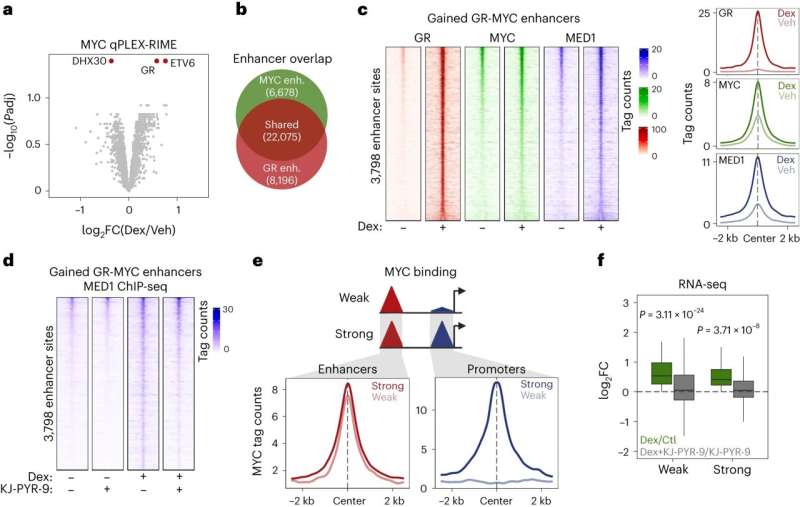This article has been reviewed according to Science X's editorial process and policies. Editors have highlighted the following attributes while ensuring the content's credibility:
fact-checked
peer-reviewed publication
trusted source
proofread
New insights into the growth and spread of cancer cells

Cancer cells are characterized by their aggressiveness: they grow rapidly and spread to other parts of the body. To enable this, numerous mechanisms come into play, and one of them involves a protein called MYC, which activates certain genes on the cancer cell's DNA strand, causing the cancer cell to grow and divide.
The MYC protein is also present in healthy individuals, where it plays a crucial role in regulating many cell functions.
"When cancer occurs, it is due to an accumulation of mutations in our DNA, often resulting in the overactivation of the MYC protein. Therefore, this protein plays a crucial role in most cancer forms," says Rasmus Siersbæk, head of research at the Department of Biochemistry and Molecular Biology, University of Southern Denmark.
Double impact in cancer cells
Now, he and colleagues report in Nature Genetics, that they have discovered another function of the MYC protein, which is significant for the cancer cell's ability to grow and divide.
It has long been known that MYC resides on so-called promoters in our DNA. These promoters are essential regulatory regions located right next to the genes in our DNA, influencing whether genes should be turned on or off.
In simple terms, MYC can help activate a range of genes that enhance the cancer cell's ability to grow and divide by binding to these promoters.
"Furthermore, it has recently been discovered that the MYC protein also sits in other locations on the DNA strand—far from genes and on so-called enhancers. Initially considered less important, these enhancers are now revealed to be crucial, as MYC can also play a significant role in these enhancers, turning on other genes essential for cancer cells to divide and spread throughout the body," explains the study's lead author, postdoc Simon Toftholm Jakobsen from the Siersbæk research group.
"Therefore, there are two overall different functions of MYC, acting on different parts of our DNA, and both are essential for boosting a cancer cell's growth and division. Consequently, there are two functions of MYC that can be targeted therapeutically," says Siersbæk.
Much of today's cancer medicine is combination therapy, where different drugs are combined for individual cancer patients to target specific functions. With this new discovery, it will be relevant to investigate whether drugs can target MYC activity on both promoters and enhancers.
According to Siersbæk, it is challenging to target the MYC protein itself with medicine. "The MYC protein is highly disorganized, and it has proven very difficult to target with medicine. So, we have looked at the proteins that help MYC activate genes. These helper proteins are easier to target. We have identified some helper proteins that are important for this new function of MYC on enhancers, and they could potentially be targets for future treatment to inhibit the cancer cells' ability to grow and spread," he explains.
The researchers have conducted their experiments on cell cultures in the laboratory. They will continue to study MYC's helper proteins in the hope of finding promising opportunities to inhibit MYC activity on enhancers, thereby reducing the cancer mass's ability to grow and spread.
More information: Simon T. Jakobsen et al, MYC activity at enhancers drives prognostic transcriptional programs through an epigenetic switch, Nature Genetics (2024). DOI: 10.1038/s41588-024-01676-z





















